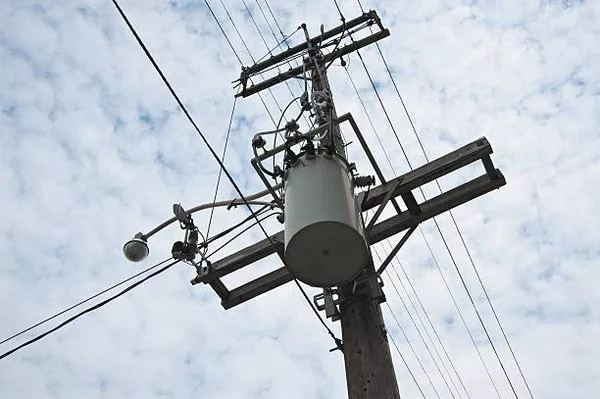Electrical transformers play a pivotal role in the efficient and reliable distribution of electrical power across various industries. These essential devices facilitate the transformation of voltage levels, ensuring the safe transmission of electricity. As businesses and infrastructure projects continue to expand, understanding the cost factors associated with electrical transformers becomes crucial for decision-makers. In this article, we will delve into the key elements that contribute to the cost of electrical transformers, shedding light on the intricacies of their pricing structure.
Transformer Types and Applications
The cost of an electrical transformer is inherently tied to its type and intended application. Transformers come in various forms, including power transformers, distribution transformers, and specialty transformers like instrument transformers. Power transformers are typically large and used in high-voltage applications, such as power generation plants, while distribution transformers are more compact and serve the purpose of stepping down voltage for local distribution.
Specialty transformers, on the other hand, cater to specific functions like measurement or protection within power systems. Each type has distinct design and manufacturing requirements, impacting the overall cost structure. For instance, power transformers often involve more complex engineering and materials, making them more expensive than distribution transformers.
Power Rating and Capacity
The power rating and capacity of a transformer are critical factors influencing its cost. Power rating is the maximum amount of power that a transformer can handle continuously, usually measured in kilovolt-amperes (kVA) or megavolt-amperes (MVA). The higher the power rating, the more robust the transformer needs to be in terms of materials, insulation, and cooling systems, leading to an increase in cost.
Transformers with higher capacity are also more expensive due to the larger amounts of copper and other materials required for construction. Moreover, higher-capacity transformers often necessitate advanced cooling systems to manage the heat generated during operation, further contributing to the overall cost.
Core and Windings Materials
The materials used in the construction of transformer cores and windings significantly impact the cost of the device. Transformer cores are typically made of laminated steel to reduce energy losses, and the quality of the steel affects the overall efficiency of the transformer. High-quality, low-loss steel comes at a higher cost but ensures better performance and longevity.
Copper is the primary material for transformer windings due to its excellent electrical conductivity. The gauge and quality of the copper windings influence the overall efficiency and heat dissipation capabilities of the transformer. Transformers with larger or high-quality copper windings are more expensive but tend to have better performance characteristics.
Design Complexity and Customization
The design complexity and customization of a transformer play a crucial role in determining its cost. Standard transformers, mass-produced with common specifications, are generally more cost-effective than custom-designed transformers tailored to specific project requirements. Customization involves engineering expertise to meet unique voltage ratios, physical constraints, or environmental conditions, which can increase both design and manufacturing costs.
Additionally, transformers designed for special applications, such as those requiring specific safety features or environmental considerations, may involve additional expenses. The complexity of the design, including factors like multiple winding configurations or advanced cooling systems, contributes to higher manufacturing costs.
Regulatory Compliance and Standards
Transformers must adhere to stringent regulatory standards and safety certifications, which can influence their cost. Compliance with international standards, such as those set by the International Electrotechnical Commission (IEC) or the Institute of Electrical and Electronics Engineers (IEEE), requires additional testing and quality control measures during manufacturing.
Ensuring that transformers meet safety and performance standards adds to the overall cost but is essential for the reliability and longevity of the equipment. Transformer manufacturers invest in quality control processes and testing facilities to meet these standards, contributing to the final price of the product.
Transportation and Installation
The cost of transporting and installing transformers should not be overlooked when considering the overall investment. Larger transformers may require specialized transportation, including permits and escort vehicles, contributing to transportation costs. Additionally, the installation process involves skilled labor, safety measures, and sometimes the need for auxiliary equipment.
The location of the installation site can also impact costs, as transformers destined for remote or challenging terrains may incur higher transportation and installation expenses. Proper planning and coordination of these logistical aspects are crucial to avoiding unforeseen costs during the project implementation phase.
See AlSO: What Are The Three Main Components Of A Electrical Transformer?
Conclusion
In conclusion, the cost of electrical transformers is a multifaceted aspect influenced by various factors. Understanding these factors, including transformer type, power rating, materials, design complexity, regulatory compliance, and logistical considerations, is essential for accurate budgeting and decision-making. As technology advances and energy infrastructure evolves, transformer manufacturers continue to innovate, impacting both performance and cost. By staying informed about these cost dynamics, stakeholders can make informed decisions that balance performance requirements with budget constraints in the ever-evolving landscape of electrical power distribution.


